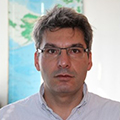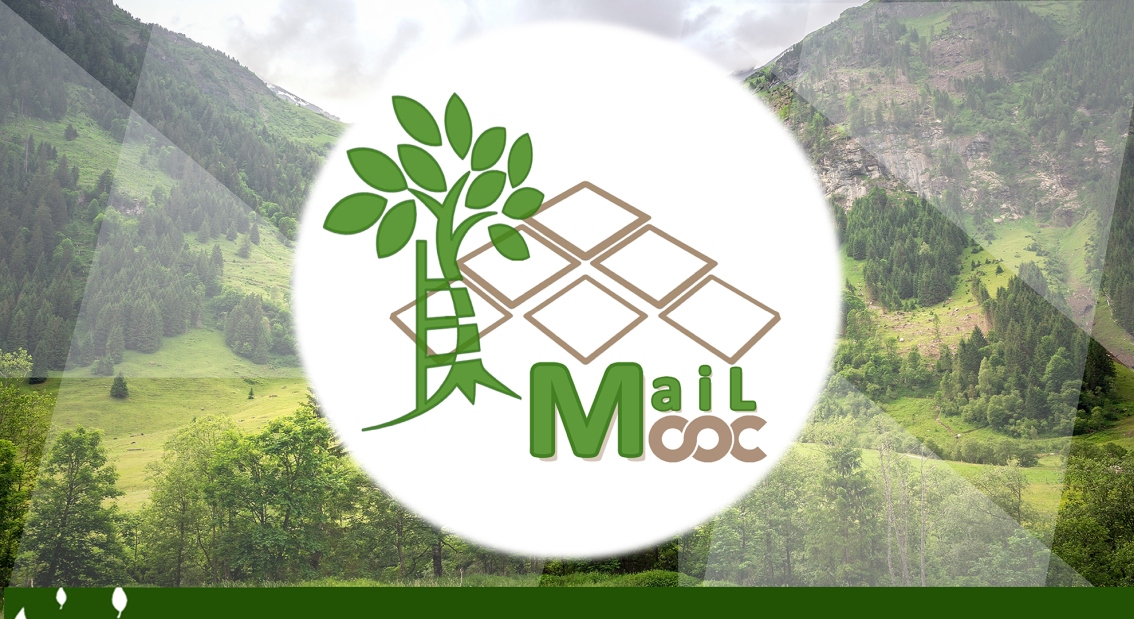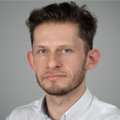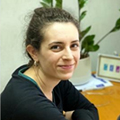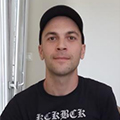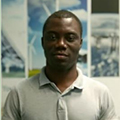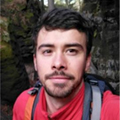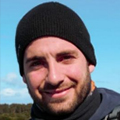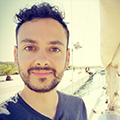Teachers of the course
Charalampos Georgiadis
Charalampos Georgiadis is an Associate Professor at the School of Civil Engineering in the Aristotle University of Thessaloniki. 1997, Diploma Rural and Surveying Engineering (AUTH), 2000, M.sc. Protection, Preservation, and Restoration of Cultural Monuments (AUTH), 2005 PhD Department of Spatial Information Science and Engineering (University of Maine, USA).
His research interests include among others Photogrammetry, Remote Sensing, Cartography, GIS, UAV, Mobile Mapping Systems, 3D modelling, laser scanners, Image processing and analysis, Spatial data analysis. Scientific Responsible or member of research groups in 47 Research projects Funded by National, European or USA Organizations. He has 59 publications in journals and scientific conferences and he is scientific reviewer in 12 Journals.
Luis A. Ruiz
Luis A. Ruiz is a professor of remote sensing and digital image processing at the Department of Cartographic Engineering, Geodesy and Photogrammetry of the Polytechnic University of Valencia (Spain), co-director of the GeoEnvironmental Cartography and Remote Sensing group, and Editor-in-Chief of the Spanish Journal of Remote Sensing. His research interests are focused on forest structure and fuel characterization using LiDAR, multispectral satellite and aerial imagery; developing object-based image analysis methods for LULC change detection and geodatabase updating.
Lampros Papalampros
Forest Engineer graduated in 2006 from the Aristotle University of Thessaloniki, Department of Forestry and Natural Environment, Greece. In 2013 he acquired an M.Sc. degree in “Photogrammetric production and remote sensing management in GIS environment” from the School of Rural and Surveying Engineering (Aristotle University of Thessaloniki, Greece). Since 2013, he is studying towards a Ph.D. in the area of Geodesy and Surveying at the same University, and the thesis is about the field of 3D capturing and monitoring of natural environments through novel technologies. He works in HOMEOTECH since 2007 and he has substantial experience in scientific areas such as forest management, cadastre, research programs, LIFE programs, environmental subjects, etc., as he is professionally active since 2004.
Michał Krupiński
Krupiński Michal is a geomatics specialist at Centrum Badań Kosmicznych PAN (Space Research Centre of the Polish Academy of Sciences) since 2010. Involved in number of scientific and R&D projects focused on geospatial data analysis. His research interest includes novel methods for satellite imagery classification, imaging spectroscopy, multifractals, marginal lands and ecosystem services.
Maria Tassopoulou
Maria Tassopoulou is PhD, Surveying Engineer (Aristotle University of Thessaloniki, Department of Rural and Surveying Engineering, Greece, MSc in Restoration of Cultural Monuments (School of Architecture, Aristotle University School of Engineering, Greece). Her areas of expertise include Photogrammetry, GIS, Remote Sensing, Cartography, and 3D modelling using photogrammetric techniques and laser scanners. From 2014, she is member – senior researcher of the Laboratory of Photogrammetry and Remote Sensing, Dept. of Rural and Surveyor Engineering, AUTH.
Natalia Verde
Surveying Engineer with a MSc in Geoinformatics (Aristotle University of Thessaloniki, Greece). Since 2018 she is a PhD candidate at the Aristotle University of Thessaloniki (AUTH) in the Laboratory of Photogrammetry and Remote Sensing. Her PhD is on mapping Sustainable Development Goals indicators at a national scale, using Remote Sensing and cloud computing technologies. She has a strong background in coding and her research interests also include GIS and Photogrammetry.
Eleftherios Mystakidis
Eleftherios Mystakidis is a Forest Engineer who graduated in 2013 from the Aristotle University of Thessaloniki, Department of Forestry and Natural Environment, Greece. He has been working at HOMEOTECH since 2013, providing technical support on projects involving GIS applications, databases and field surveying, participating in the redaction of forest and environmental studies (management, fire protection, road construction and maintenance, technical works, management of protected areas, etc) and field works for surveying and data collection.
Bettina Felten
Bettina Felten is a GIS and remote sensing specialist at IABG Geodata Factory in Dresden, Germany, since September 2018. Her main focus is automated image analysis in the context of remote projects. Bettina is graduated from Wageningen University and Research with a M.Sc. Geo-Information Science and Remote Sensing.
Samuel Nyarko
Samuel Nyarko is a master’s student of Big Data and Artificial Intelligence at SRH Berlin University of Applied Science with seven years of working experience in geospatial technology application on large-scale multinational projects. Samuel is a co-founder and former CEO of Integrated Geospatial Intelligence Application Centre in Ghana. His research interest lies in the combined computer vision and remote sensing applications on mineral resource exploration in particular and also for any object identification, classification, and localization endeavors.
Fernando Bezares
Fernando Bezares is an environmental engineer specialised in geographic information systems applied to the forestry sector working in Cesefor’s IT department. He has worked at the United Nations FAO defining remote sensing based methodologies for the indicators associated with the UN Sustainability Goals. Fernando is a graduate of the first promotion of the Data Forest Master (2017-2019, University of Valladolid). His Final Master's Work (Automatic forest mass segmentation tool from remote sensors: LiDAR and Sentinel-2) was awarded at the SECF 2019 awards.
Jesús Torralba Pérez
Jesús Torralba Pérez is a Forestry and Natural Environmental Engineer from the University of Castilla-La Mancha (Spain). He studied a master’s degree in Remote Sensing at the Universidad Mayor (Chile). Since the end of 2017, he is a PhD student in Geomatics Engineering at the GeoEnvironmental Cartography and Remote Sensing Group (CGAT) at the Polytechnic University of Valencia. His PhD is focused on the characterization of forest structure and forest fuel by integrating analysis of methods based on Terrestrial Laser Scanning (TLS), airborne LiDAR and imaging. His interests and experiences are focused on the analysis and management the forest resources and natural environments with remote sensing and GIS in the framework of climate change.
Juan Pedro Carbonell-Rivera
Juan Pedro Carbonell Rivera is an engineer in Geomatics and Topography by the Universitat Politècnica de València (UPV) with a M.Sc. in Geomatic Engineering and Geoinformation by the UPV and a M.Sc. of the International Master in Geomatics of the Hochschule Karlsruhe – Technik und Wirtschaft (HsKA). Since September 2018 he is PhD student in Geomatics Engineering UPV. His research is focused on characterisation of forest structure by integrated analysis of methods based on Unmanned Aerial Vehicle (UAV) derived imagery.
